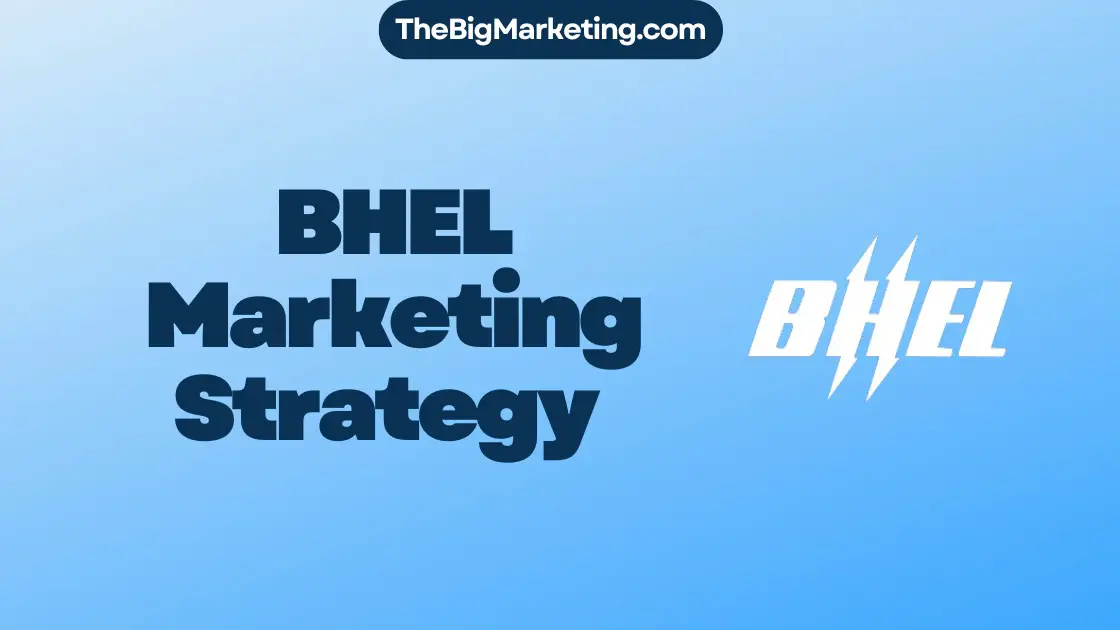In today’s competitive market, a strong brand is crucial for driving business growth and establishing a memorable market presence. Effective branding techniques can not only differentiate your business from competitors but also influence customers’ purchasing decisions. By implementing successful branding campaigns, businesses can charge higher prices for their products, experience faster sales cycles, and increase company value. This article will delve into the various strategies and marketing techniques that can contribute to the success and growth of your business.
Key Takeaways:
- Strong branding influences purchasing decisions for 92% of customers.
- Companies with strong brands can charge up to 20% more for similar products.
- B2B companies with strong brands experience 68% faster sales cycles on average.
- Brand consistency can increase company value by up to 25%.
- 78% of customers prefer brands that maintain consistent messaging and tone.
Implementing effective branding techniques is essential for business growth and success. By understanding the power of branding and leveraging the right strategies, you can create a strong brand identity that resonates with your target audience. From building brand awareness to establishing trust and reputation, and maintaining consistency, each aspect plays a vital role in shaping the perception of your brand.
The Importance of Branding in Business
With the rise of social media, consumers are exposed to new brands daily, resulting in increased competition in today’s business environment. In such a saturated market, effective branding plays a crucial role in helping businesses stand out, build recognition, and gain a competitive edge.
Branding goes beyond creating a logo or visual identity. It involves developing brand positioning strategies, which enable businesses to differentiate themselves from competitors and establish a unique market presence. By carefully crafting their brand identity, businesses can create a distinct and memorable image that resonates with their target audience.
Investing in branding is not just about aesthetics; it’s about building trust and credibility with the audience. A strong brand showcases professionalism and instills confidence in consumers. When consumers recognize a well-established brand, they are more likely to trust the products or services offered.
A cohesive branding strategy is also closely intertwined with advertising. The consistency in branding elements enhances the effectiveness of advertising campaigns and helps in building brand recognition. Consumers are more likely to remember and connect with a brand that presents a unified visual and messaging approach across different touchpoints.
Moreover, well-developed branding can have significant internal benefits for a business. It improves employee morale by fostering a sense of unity and pride within the company, as employees become ambassadors for the brand they represent.
Effective branding strategies contribute to creating loyal customers who form emotional connections with the brand. By standing for a greater purpose or mission, brands can attract and retain customers who align with their values. In fact, studies have shown that a majority of consumers make purchasing decisions based on the shared values they have with a brand.
For instance, 82% of surveyed consumers buy from brands that stand for a greater purpose or mission, while 67% believe that the brands they purchase from make them better people. In addition, 70% of consumers desire a personalized experience from brands, highlighting the importance of creating a unique brand identity that resonates with the target audience.
Branding is not just a trend of the modern business landscape. The Coca-Cola brand’s century-long success is a testament to the lasting impact of branding. Well-executed branding has the power to influence purchasing decisions, shape customer perceptions, aid in customer recall, enhance advertising efforts, and ultimately contribute to a company’s overall success.
Businesses with strong branding have a perceived value that is 5-20% higher than their actual intrinsic value, indicating the significant impact of branding on market perception. In fact, companies that invest in branding can see an average increase in revenue by up to 23%. Good branding practices can even result in a markup of products or services by up to 20%, showcasing the direct impact on profitability.
A successful branding campaign can also foster customer loyalty, with an average increase of 12%. Brand loyal customers not only continue to choose a brand over competitors but also become brand advocates, recommending the brand to others and driving word-of-mouth marketing.
Furthermore, branding extends beyond customer relationships. Companies that invest in employer branding are three times more likely to attract quality candidates, showcasing the role of branding in attracting top talent and building a strong workforce.
In conclusion, branding is essential for influencing purchasing decisions, creating a business identity, aiding in customer recall, enhancing advertising efforts, fostering employee pride, and building trust and loyalty with customers. With the increasing competition in the business landscape, implementing effective brand positioning strategies, brand identity development, and brand differentiation tactics is more critical than ever to ensure business growth and success.
Creating Brand Awareness
Establishing brand awareness is a crucial aspect of any successful branding strategy. It involves implementing various brand awareness techniques and brand messaging strategies to ensure that your target audience recognizes and remembers your brand.
One effective way to create brand awareness is through consistent and impactful advertising. By crafting compelling advertisements and placing them strategically across different channels, you can reach a wider audience and increase brand visibility. Advertising can take many forms, including print ads, television commercials, online banners, and social media ads.
Social media marketing is another powerful tool for building brand awareness. With over 4.2 billion active social media users worldwide, platforms like Facebook, Instagram, and Twitter provide endless opportunities to connect with your target audience. By regularly posting engaging content, leveraging influencer partnerships, and utilizing paid advertising on social media, you can effectively promote your brand and increase its reach.
Content marketing is also instrumental in creating brand awareness. By creating valuable and informative content that resonates with your target audience, you can position your brand as an industry leader and build trust. This can be accomplished through blog posts, articles, videos, podcasts, and other forms of content that provide valuable insights and solutions.
Word-of-mouth marketing is another essential brand awareness technique. Research shows that over 50% of brand reputation comes from online sociability. Encourage satisfied customers to share their positive experiences with others, whether through online reviews, testimonials, or social media mentions. People are more likely to trust and engage with a brand if they hear positive feedback from their peers.
Brand messaging strategies play a vital role in creating brand awareness as well. It’s important to communicate your brand’s unique value proposition effectively and consistently across all marketing channels. Craft clear and concise brand messages that highlight the key benefits and differentiators of your products or services. By clearly conveying your brand’s value, you can attract customer attention and stand out from competitors.
In conclusion, creating brand awareness is a multifaceted process that requires a combination of brand awareness techniques and brand messaging strategies. Through advertising, social media marketing, content marketing, word-of-mouth marketing, and effective brand messaging, you can increase brand visibility, build trust, and attract a loyal customer base.
Building Brand Trust and Reputation
Building trust and maintaining a strong reputation are key factors in the success of any business. In today’s highly competitive market, brand reputation management and implementing customer trust-building strategies have become crucial for establishing credibility and fostering long-term relationships with consumers.
Research shows that trust plays a significant role in purchasing decisions. A whopping 80% of millennials buy products and services from brands they trust, compared to 60% of baby boomers. When consumers trust a brand, they are more likely to make repeat purchases, leading to increased sales and revenue.
Nearly 40% of Americans will never use a brand they no longer trust, and over 40% will seek alternatives from competitors. Losing trust can have severe consequences for a brand, as only about 20% of consumers would consider using a brand again after losing trust. Therefore, businesses must prioritize building and maintaining trust to avoid losing loyal customers.
To establish trust, brands need to focus on authenticity and credibility. Authenticity can be achieved by being genuine, honest, and transparent in customer interactions. Offering transparency in communications and business practices helps build trust by showing honesty and openness.
Another effective strategy for building brand trust is content marketing. By sharing their expertise through high-quality and relevant content, brands can establish themselves as thought leaders and gain the trust of their target audience.
In the digital age, social proof and user-generated content are essential for establishing brand authenticity. Encouraging user-generated content on social media and leveraging influencer marketing can help brands access new audiences and enhance their credibility.
Moreover, brands can build trust by taking feedback from customers seriously and being willing to rectify any issues based on customer input. Communication of company values is also crucial in establishing brand trust, as aligning actions with stated values helps build confidence and loyalty among customers.
Consistency is vital in building brand trust over time. Brands must maintain consistency in their values, messaging, visuals, and overall brand identity to establish a recognizable and trustworthy image in the minds of consumers.
In today’s transparent era, demonstrating transparency is key to building brand trust. A survey found that 94% of customers are likely to trust brands that demonstrate transparency, and 73% of respondents are willing to pay more for products from transparent businesses.
In conclusion, building brand trust and reputation takes time and effort, but it is crucial for long-term business success. By implementing customer trust-building strategies, such as practicing transparency, delivering high-quality products or services, and maintaining consistent brand messaging, businesses can foster trust, loyalty, and credibility among their target audience.
Consistency in Branding
Consistency plays a crucial role in building a successful brand. By maintaining brand consistency across all marketing channels and touchpoints, businesses can establish a strong and recognizable brand identity that resonates with their target audience. This section explores the importance of brand consistency and its impact on customer perception and loyalty.
A study conducted by The Verde Group and The Wharton School revealed that two-thirds of consumers use multiple channels to interact with their favorite brands. This emphasizes the significance of maintaining consistency in brand messaging across various platforms.brand consistency and brand messaging consistency are key factors in delivering a unified brand experience to customers, regardless of the channel they choose to engage with.
Nike stands as a prime example of brand consistency, having successfully maintained its branding with the iconic swoosh logo and the renowned catchphrase “Just do it” for over 40 years. This commitment to consistent branding has helped Nike cultivate a strong brand image that resonates with consumers, showcasing the long-term power and impact that consistent branding can have.
Consistency in branding builds trust and awareness among the audience, creating a positive and lasting image of the organization. When a brand maintains consistent messaging, visual identity, and tone of voice across all marketing materials and communication channels, it establishes credibility and reliability in the eyes of customers and potential customers.
Developing a clear brand strategy is crucial for aligning goals and vision with customer expectations. A well-defined brand strategy serves as a guideline for building a successful brand, ensuring that all brand communications, behaviors, and experiences are consistent and aligned.
In addition to messaging, a striking visual brand identity is vital in creating brand consistency. Clear brand guidelines and a definitive brand identity foundation help businesses maintain visual uniformity across channels. This consistency enhances brand recognition and reinforces the brand’s unique personality and values.
The Role of Consistent Branding Across Touchpoints
Developing a consistent brand across different touchpoints is essential for enhancing brand awareness, trust, and loyalty. Businesses must focus on high-quality content creation, ensuring that messaging and personality remain consistent across all channels. Engaging with customers consistently across multiple channels not only reinforces brand messaging but also helps in building trust and rapport with the audience.
Brand consistency has the power to increase customer trust and loyalty, leading to long-term commitment to a company. By consistently delivering on their brand promise, businesses can foster strong relationships with customers, ultimately establishing a loyal customer base.
Maintaining brand consistency also gives businesses a competitive edge in the industry. It helps organizations stand out from their competitors by creating a distinctive and memorable brand identity that resonates with consumers. Consistent branding can help establish brand authority, positioning a company as a leader in its sector.
Brand recognition is directly correlated with brand consistency. When customers consistently encounter a brand with a cohesive identity and messaging across various touchpoints, they are more likely to remember and recognize the brand. This recognition, in turn, influences their purchase decisions and recommendations to others.
Best Practices for Brand Consistency
To ensure brand consistency, businesses should follow these best practices:
- Develop comprehensive brand guidelines that outline the brand’s visual identity, messaging, tone of voice, and personality.
- Consistently use the brand’s color palette to evoke specific emotions and reinforce the brand’s identity.
- Create a distinct and recognizable logo that aligns with the brand’s values and resonates with the target audience.
- Choose primary and secondary typefaces and use them consistently across all brand communications.
- Ensure that the style of images used aligns with the brand’s elements and conveys the brand’s values effectively.
- Use appropriate language with a consistent tone and voice to establish and reinforce the brand’s personality.
- Pay attention to word choice and sentence structure to maintain consistency and clarity in brand messaging.
- Regularly communicate with the audience on all channels to drive consistency and build trust.
- Utilize digital asset management software to organize media assets, ensuring brand consistency and alignment with the brand image and persona.
By following these best practices and maintaining brand consistency, businesses can establish a strong and memorable brand identity that resonates with customers, ultimately leading to increased brand awareness, trust, loyalty, and success in the marketplace.
| Benefits of Brand Consistency | Challenges to Brand Consistency |
|---|---|
| Establishes a strong brand identity | Resistance to hearing feedback from customers and stakeholders |
| Builds trust and awareness with the audience | Leaders being resistant to upholding the brand promise |
| Increases customer trust and loyalty | Competition for customers in most industries |
| Positions the brand as a leader in the industry | Consumers’ ability to see through attempts to cover flaws with branding |
| Impacts customer purchase decisions and recommendations | Lack of high-quality components and training for consistent brand experiences |
Storytelling and Emotional Branding
Storytelling is a powerful tool in brand communication, as it has the ability to create emotional connections with customers. By leveraging brand storytelling techniques, businesses can effectively convey their brand values, mission, and unique selling proposition in a compelling and engaging manner. Incorporating emotional branding techniques further enhances this connection, aiming to evoke specific emotions and develop a strong emotional bond between the brand and its customers. This emotional connection plays a significant role in increasing brand loyalty and customer engagement.
Emotional storytelling has been proven to have a profound impact on customer engagement and satisfaction. Studies have shown that brands that successfully utilize emotional storytelling experience an increase in sales, as customers are more likely to connect with and resonate with brand messages that evoke emotional responses. Emotional stories also help build trust and credibility with the audience, leading to higher levels of customer engagement and satisfaction.
One of the key benefits of incorporating storytelling and emotional branding techniques is the creation of a deeper connection with the audience. By weaving narratives that resonate with the target audience’s emotions and values, brands can foster a more meaningful relationship. This not only enhances brand awareness but also establishes a strong emotional bond with customers, which ultimately drives conversions and encourages them to take action.
Well-crafted emotional stories are effective in differentiating a brand from its competitors and creating a unique brand image. By using storytelling to communicate the brand’s central idea and evoke emotional triggers, businesses can leave a lasting impression on their audience. Emotional branding has been found to increase engagement and inspire customers to develop a long-term relationship with the brand, resulting in increased brand loyalty and a significant boost in lifetime value.
Authenticity is key in emotional storytelling. Consumer psychologists have identified various emotional triggers that brands can tap into, such as the desire to stand out, build a better future, experience well-being, seek instant gratification, or protect the environment. By aligning the brand’s values and storytelling with these emotional triggers, brands can effectively engage their target audience and inspire them to make a purchase.
It is worth noting that emotional branding can be applied even in industries that are not typically emotionally-driven. For example, promoting the environmental benefits of energy-efficient light bulbs can provide a competitive edge and create an emotional connection with customers who value sustainability. The key is to integrate emotional storytelling techniques in a way that resonates with the target audience and effectively communicates the brand’s message.
There are different types of brand storytelling, including brand founder stories, employee stories, customer stories, and inspirational stories. Each type serves a unique purpose in conveying the brand’s central idea and triggering emotional responses in the audience. Visual elements, including design and storytelling elements, also play a crucial role in emotional branding, ensuring that the brand’s visual identity aligns with the emotional triggers being targeted.
Overall, integrating storytelling and emotional branding techniques is a powerful strategy for differentiating a brand and fostering a strong emotional connection with customers. By effectively tapping into their emotions, brands can create a lasting impact on their target audience and drive engagement, loyalty, and sales.
Target Audience Analysis
To effectively reach and engage with your target audience, it is crucial to understand who they are and what drives their decision-making process. This is where target audience analysis and customer segmentation come into play. By conducting thorough research and gathering relevant data, businesses can gain valuable insights into the specific needs, preferences, and behaviors of their ideal customers.
Demographics play a significant role in defining a target audience. These include factors such as age, race, gender, income, occupation, marital status, religion, education, and location. Understanding these demographics helps businesses tailor their branding strategies and marketing efforts to better resonate with their target audience.
Various tools and platforms provide valuable data for target audience analysis. Facebook Insights, for example, offers demographic information such as age group, gender, and location for fans, followers, and engagement. The Instagram Audience tab reveals location, age range, and gender information for your followers. Google Analytics provides audience data, including visitors’ geographic location, language, age range, gender, and interests.
CRM platforms are another valuable resource as they store customer data that can be analyzed to understand behaviors, satisfaction levels, and demographics. Surveys also play a crucial role in collecting demographic information from customers, providing valuable insights into their preferences.
Furthermore, social media platforms offer a wealth of information for target audience analysis. By engaging with competitors’ social pages, businesses can gain insights into the exact individuals they are targeting and understand their preferences and behaviors.
Psychographic analysis is another important aspect of target audience analysis. It delves into subjective factors such as behaviors, attitudes, opinions, and preferences. This analysis provides insights into the personality traits that shape individuals, allowing businesses to craft targeted messaging and strategies that resonate with their audience.
When developing an audience persona, it may be necessary to segment the broader target audience into specific groups and create personas for each segment. These segments are based on demographics and psychographics, allowing businesses to create personalized communication strategies that enhance audience engagement.
An Example of Audience Segmentation:
| Segment A | Segment B | Segment C | |
|---|---|---|---|
| DemoGraphics | Age: 25-34 Gender: Female |
Age: 18-24 Gender: Male |
Age: 35-44 Gender: Male |
| PyschoGraphics | Interests: Fitness Opinions: Environmentally conscious |
Interests: Technology Opinions: Adventurous |
Interests: Finance Opinions: Career-oriented |
| Communication Strategies | Highlight eco-friendly products Create fitness-focused content |
Emphasize technological advancements Showcase adventure-driven experiences |
Focus on financial goals and benefits Provide career-related resources |
Mapping the customer journey is also essential for target audience analysis. By understanding the paths that individuals take to reach their desired outcomes, businesses can identify effective touchpoints for brand resonance. This helps in creating a seamless and personalized customer experience that drives engagement and conversions.
Lastly, review sites offer emotional insights into audience desires and fears. Positive reviews reflect desired outcomes, while negative reviews reveal feared outcomes. This information is invaluable for crafting a communication strategy that addresses the needs and aspirations of the target audience.
Target audience analysis and customer segmentation allow businesses to develop specific communication strategies tailored to different audience segments. By understanding their target audience on a deeper level, businesses can enhance engagement, build brand loyalty, and ultimately drive business growth.
Integrated Marketing Strategies
An integrated marketing campaign refers to a cross-channel marketing strategy aimed at creating consistent campaigns across various platforms for a cohesive customer experience. As customers encounter brands and advertisements across multiple channels regularly, it becomes essential for businesses to have a presence on platforms frequented by their target audience to establish brand recognition and increase visibility.
A quality integrated marketing campaign ensures consistent messaging in visuals and text across different platforms. Recognizable colors, layout, and images are utilized to create cohesive branding and enhance brand recognition. By maintaining visual consistency, businesses can build trust and familiarity among their target audience, leading to stronger brand recall and engagement.
When building an integrated marketing campaign, defining the target audience and determining key performance indicators for success are crucial steps. By understanding who the campaign is targeting, businesses can tailor their messaging and choose the platforms where the audience interacts most frequently.
Evaluating campaign success through defined metrics helps identify the most efficient platforms and guides future campaigns for enhanced productivity. Regular tracking of common metrics and key performance indicators (KPIs) provides valuable insights into the effectiveness of the marketing campaign, allowing businesses to make data-driven decisions and optimize their strategies.
Integrated marketing campaigns are vital for engaging modern consumers who interact with brands across multiple platforms. By utilizing an omnichannel marketing approach, businesses can deliver a seamless and comprehensive brand experience, regardless of the channel or platform the customer chooses to engage with. This approach enhances brand engagement and increases the chances of finding success in today’s digitally connected world.
According to a 2022 Trend Report on Marketing Strategy, marketers who set goals are 377% more successful than those who do not, while those with a documented strategy are 313% more successful. Additionally, marketers who document their workflows are 466% more likely to report being successful. By prioritizing goal-setting, strategic planning, and workflow organization, businesses can ensure the effectiveness of their integrated marketing campaigns.
Challenges and Tools for Executing Integrated Marketing Strategies
Executing an Integrated Marketing Communications (IMC) strategy comes with its share of challenges. Ensuring message consistency across various channels and platforms can be daunting, especially when multiple team members are involved in marketing activities. To overcome this challenge, tools like CoSchedule can help organize marketing efforts and facilitate team collaboration, ensuring message consistency and brand voice guidelines are maintained.
Adapting to changing consumer behaviors, such as the trend towards sustainability, is another factor that can enhance marketing effectiveness and consumer engagement. By aligning the integrated marketing campaign with emerging consumer trends, businesses can connect with their target audience on a deeper level and establish themselves as industry leaders.
Budget allocation is another crucial aspect of successful integrated marketing campaigns. Allocating a portion of the budget to brand building, in addition to sales activation campaigns, ensures long-term marketing effectiveness and brand growth.
Southwest Airlines is an exemplary brand that boasts consistent branding across various touchpoints. From mobile applications to in-flight services and airport terminals, Southwest Airlines maintains a unified brand message, contributing to its strong brand presence and recognition.
Key Performance Indicators and Channels for Integrated Marketing Campaigns
Key performance indicators (KPIs) play a significant role in evaluating the success of integrated marketing campaigns. These may include metrics related to traffic/reach, engagement, impact, sentiment, lead generation, and sales. By tracking these metrics, businesses gain valuable insights into the effectiveness of their strategies and can make informed decisions to optimize future campaigns.
There are 10 major marketing channels that businesses can use to distribute campaign content effectively, including social media, email marketing, content marketing, traditional advertising, and more. Defining buyer personas by channel helps tailor campaign assets for specific audiences on each medium, ensuring targeted and personalized messaging that resonates with the audience.
Having dedicated channel managers is crucial for ensuring proper alignment of channel-specific content with the integrated marketing campaign. These managers oversee the implementation of strategies across different platforms, ensuring consistency and maximizing the impact of each channel.
Repurposable marketing assets such as videos, images, quotes, blog posts, and soundbites help maintain consistency across different channels. By repurposing content, businesses can create a cohesive brand narrative while maximizing the value of their marketing assets.
Even if the primary campaign goal isn’t lead generation, brands should establish a lead collection plan to capitalize on potential opportunities for customer conversion. By collecting and nurturing leads, businesses can create a robust customer pipeline and drive long-term growth.
| Benefits of Integrated Marketing Strategies |
|---|
| Reaching wider audiences |
| Maintaining brand presence |
| Building trust and reputation |
| Repurposing assets across channels |
Effective integrated marketing strategies enable businesses to reach wider audiences, maintain brand presence, build trust and reputation, and repurpose assets across diverse channels. By aligning marketing channels and assets, businesses can deliver a unified brand message and create a seamless customer experience, ultimately driving bottom-line outcomes such as increased sales revenue.
Conclusion
Effective branding techniques, such as brand strategy and marketing strategy, play a crucial role in driving business growth. Companies that conduct systematic research on their target client group experience faster growth and higher profitability. Specialists within professional services firms, who focus on a specific target audience, grow faster and command higher fees compared to non-specialists.
A positioning statement, consisting of four to six sentences, encapsulates the core brand positioning within its marketplace. Content marketing, particularly in the digital age, is highly effective for professional services firms. It attracts, nurtures, and qualifies prospects efficiently, contributing to brand visibility and reputation.
High-performance websites are essential for brand development, showcasing expertise, attracting prospects, and engaging with audiences. Building a marketing toolkit, including sales sheets, pitch decks, brochures, and videos, enhances business development efforts and brand perception.
To ensure success, tracking the implementation of a brand development strategy is crucial. Adjustments based on real-time data and feedback are necessary. A strong brand establishes trust with customers and creates brand recognition. It drives business value, guides marketing efforts, fosters customer loyalty, attracts top talent, differentiates from competitors, encourages brand advocacy, and informs product development. In conclusion, a robust brand strategy provides clear direction for growth.






